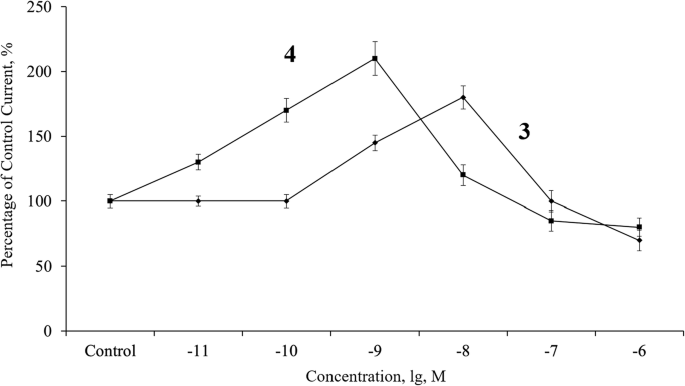

The ionotropic receptors themselves are ligand gated ion channels, ie the channels only opens in response to the binding of a ligand molecule such as glutamate. The specialised structure that performs this vital function is the synapse and it is in the synapse that the ionotropic glutamate receptors are generally found. The transmitter diffuses across a small gap between two cells (the synaptic cleft) and stimulates (or inhibits) the next cell in the chain by interacting with receptor proteins. An electrical impulse in one cell causes an influx of calcium ions and the subsequent release of a chemical neurotransmitter (e.g. This process is the means by which cells in the brain (neurons) communicate with each other. Glutamate is the major excitatory neurotransmitter in central nervous system (CNS) and as such the glutamate receptors play a vital role in the mediation of excitatory synaptic transmission (see animation).

Functions of the ionotropic glutamate receptors This has fundamental consquences for the calcium permeability of subunits such as the AMPA type subunit GluA2 and the kainate receptor subunit GluK1. Thus different splice variants may interact differently with the same set of proteins leading to, for instance, differential subunit localisation.Ī further modification leading to diversification is RNA editing, in which selected nucleotides in the mRNA sequence transcribed from the gene sequence are enzymatically modified, changing the amino-acid coded for. This could have important functional consequences as the C-terminus is also the site for multiple protein-protein interactions (eg GluA2/NSF). The C-terminus of the ionotropic glutamate receptors is the site of extensive splice variation (for example, see the NMDA receptors). This is known as 'splice variation' and is very common among neuroreceptors. For instance, different regions of this mRNA molecule can be spliced together, giving rise to multiple mRNAs that are translated into different proteins. However, following gene transcription, the resultant pre-mRNA may be modified. Individual receptors are multimeric assemblies of subunits, transcribed from separate genes (eg GluN2A-D are produced from four genes). This diversity is generated both before and after gene transcription. The ionotropic glutamate receptors are an extremely diverse group of receptors. Diversity of the ionotropic glutamate receptors These two sequences show structural similarities to the bacterial periplasmic amino-acid binding protein.


In addition, the long loop between TMIII and TMIV, which is intracellular in other ligand gated ion channel subuhnits, is exposed to the cell surface, and forms part of the binding domain with the C-terminal half of the N-terminus. However, in contrast to other receptor subunits, the TMII domain forms a re-entrant loop giving these receptor subunits an extracellular N-terminus and intracellular C-terminus (Figure 1). Like other ligand gated ion channels, such as the GABAA receptor, the ionotropic glutamate receptor subunits possess four hydrophobic regions within the central portion of the sequence (TMI - IV Figure 1). In addition, a further family of delta-receptor subunits have more recently been shown to be important in some aspects of synaptic plasticty.Īll ionotropic glutamate receptor subunits share a common basic structure. The ionotropic glutamate receptors are multimeric assemblies of four and are subdivided into three groups ( AMPA, NMDA and Kainate receptors) based on their pharmacology structural similarities. The large N-terminal domain is extracellular while the shorter C-terminal domain is intracellular. General structure of an ionotropic glutamate receptor subunit.


 0 kommentar(er)
0 kommentar(er)
